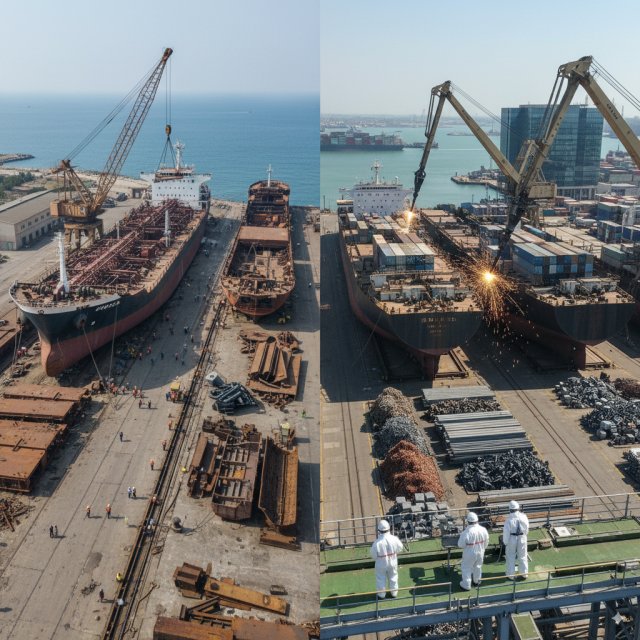Kamrul Islam: Alang Shipbreaking Yard, located in Gujarat’s Bhavnagar district on India’s western coast, is known as the world’s largest shipbreaking hub. Stretching across nearly 10 kilometers of coastline, hundreds of yards are lined up where massive ocean-going vessels are dismantled. Since its official inauguration in 1983, Alang has emerged as a dominant force in the global ship recycling market.
The Hong Kong International Convention, which came into effect in September 2025, has also brought major changes for Alang. With preparations underway to meet international requirements, Alang is now re-emerging in a new form.
Economic significance of Alang
The shipbreaking industry in Alang is one of the key foundations of India’s steel sector. Each year, about 4–5 million tons of scrap steel are produced here, contributing significantly to India’s infrastructure, construction, and heavy industries. In addition, used equipment, generators, electrical items, furniture, and even household goods are recycled here and sold in local markets.
Nearly 50,000 workers are directly employed at Alang, while several hundred thousand more depend on the industry indirectly for their livelihood.
Journey of modernization
Compared to Bangladesh and Pakistan, Alang began preparations to comply with the Hong Kong Convention much earlier. The Government of India, together with the Gujarat state administration, has provided policy support to modernize the yards.
Almost 90% of the yards have already obtained “Statements of Compliance” (SoC) recognized under the Convention.
Concrete flooring, waste management plants, oil-spill control systems, and special hazardous waste storage units have been set up.
Medical centers, training schools, and emergency rescue units have been launched for workers.
As a result, Alang has today become one of the safest and most acceptable recycling hubs for international shipping companies.
Worker safety and health
Most of Alang’s workers are migrants from Uttar Pradesh, Bihar, Odisha, and West Bengal. Accidents, fires, and health hazards used to be commonplace here. But in recent years, significant improvements have been made in worker protection.
- Helmets, safety belts, masks, and protective shoes are now mandatory.
- Every yard has a first-aid center.
- Special health checkups are carried out for workers exposed to hazardous waste.
Labor unions admit that much still needs improvement, but compared to the past, the working environment is far safer today.
Environmental protection
The Alang coastline once suffered severe impacts on marine biodiversity. However, under the Convention, strict measures have been introduced for waste management and oil-chemical control. Almost all yards now have hazardous waste disposal facilities, with regular monitoring carried out by the Gujarat Pollution Control Board.
International perspective
The European Union and Japanese shipping companies have already started sending vessels to Alang, as the yards now provide assurance of meeting international standards. With the guarantee of safe and sustainable recycling, shipowners’ confidence in Alang has grown steadily.
Experts believe that after the implementation of the Hong Kong Convention, Alang will further consolidate its dominance in global ship recycling.
Challenges
However, not everything is positive.
- Workers’ real wages remain low.
- Local villagers complain that environmental pollution has not been entirely eliminated.
- To remain competitive internationally, further adoption of advanced technologies and greater transparency are required.
Future outlook
Alang now stands at the heart of a transformation. Once criticized for pollution and worker deaths, it is gradually becoming one of the world’s most sustainable shipbreaking hubs. Experts suggest that Alang’s experience could serve as a lesson for other South Asian countries—particularly Bangladesh and Pakistan.











